March 2001 Edition
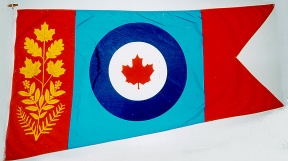
March 2001 Edition

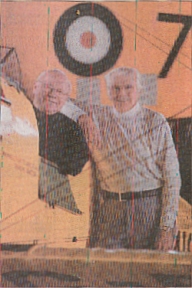 |
ORAL HISTORY PROJECT
TAKES FLIGHT AT AIR TRAINING MUSEUM By Shelley Vivian Brandon Sun ~ March 5, 2001 Alex Matheson sits in the
Photo by Bruce Bumstead/Brandon Sun
|
Those who trained to fight for Canada in the Second World War are thrilled by a project recently completed at Brandon's Commonwealth Air Training Plan Museum.The museum opens its oral history project to the public this week. It features personal stories, in video, audio, and written form, of veterans and other Canadians whose lives were touched by the war.
Brandon's Jack Stacy trained as an air gunner during the war. He's happy something is being done to teach Canadians about the vital part this country played in preparing airmen for war.
"I think it's a very important part of history," said Stacy. "It's something that should go down in history because Canada played a very, very important role training air crew."
Not enough people know that Canada trained more than 131,000 commonwealth airmen, he said, and that of those, 72,000 were Canadian. More than 18,000 of those Canadians were killed in action.
Stacy's training took him to Edmonton, Gimli, near Portage La Prairie, Calgary and Quebec, before he went overseas to serve in England.
His crew completed a partial tour of duty before VE-Day and then volunteered for action in the south Pacific. The war ended before that happened and Stacy was discharged in September 1945.
It was a short career, but one that taught him some valuable lessons.
"I went in at 18 and was out at 20, but you learned a lot. You mature quickly," he said.
Part of what he learned was that his grandfather was right when he told him about war before he left to fight.
"When I was in Vancouver enlisting, and I was waiting for a train to take me to Edmonton, I visited my grandfather. He was a veteran of the First World War and survivor from Vimy Ridge, where Canadians made a name for themselves," Stacy said.
"He said, 'son, war is heck,' is hell, in other words. He says, 'you'll see a lot of destruction, a lot of noise. You'll see your friends and buddies blown up and killed right in front of you.'
"And I said, 'oh yeah.' You know how an 18-year-old is, but when I got over there and I'd seen the destruction in England . . actual bombing raids, aircraft blown down right in front of us and beside us, hit with flak, and fellows you knew. His words came back to me quite a few times."
Ensuring young people know about the contributions Canada made to the war will only happen through projects like the one completed at the museum, said fellow veteran Alex Matheson, who also lives in Brandon.
"I think it's important, he said. "It's been a number of generations now since the end of the war."
Taking part in the project has reminded Matheson not only of the horrors of battle but of the feelings he had when he signed up.
"I turned 18 in the spring of '43 and my ambition at that time was to be a fighter pilot, or a pilot in the air force, and that's all I wanted to do," he recalled.
Matheson completed training but his dreams were dashed when, after getting his wings, he ended up on an active air reserve and would have to wait for the call.
"Well, I just cried because I was so terribly disappointed. You're 18 or 19. You're looking for adventure and there was nothing more adventuresome than that," he said.
"With the war still on, I said, 'the heck with them, I'll join the army,' so I joined the army, went infantry corps and signed up airborne, and although the war finally ended before I got the airborne training, I did take it and I ended up here in Shilo and then Rivers as a parachute instructor for three years. Then I went armoured corps and I stayed in for a total of 33 years, so it was a pretty exciting adventure from start to finish.
Matheson had a variety of postings, including Korea in 1954, Cypress in 1964 (with the first Canadian contingent to go there), Vietnam and Laos. He retired from the armed forces in 1975.
Matheson's and Stacy's stories are just two of the 645 stories collected for the museum's project, which was prompted by an ongoing interest on the part of museum members to preserve the tales.
"They were saying, "how can we capture these stories before they are gone?" said Stephen Hayter, the museum's executive director.
Three students were hired by the museum, with funding from Human Resources Development Canada. With equipment loaned by WCG-TV, the students recorded stories and mixed them with re-enactments to create a 25-minute video that will form part of the exhibit. Audio and print stories are also included, not only of veterans, but of war brides, families and others who grew up during the Second World War.
The project, which took about seven months to complete, will be unveiled at a special gathering on Wednesday for those who participated in the project. After that, it will be on public display at the museum.
This was submitted to us by one of our American readers:
I approached the entrance to Ft Belvoir's medical facility last year as an old veteran puttered towards me. Easily over 80 years old, stooped and slow, I barely gave him a second glance because right behind him, on his heels, was a full bird colonel. As they approached, I rendered a sharp salute and barked, "Good morning, Sir!" Because they were heal to toe, I began my salute as the old veteran was about two paces from me. He immediately came to life! Transformed by my greeting, he rose to his full
height, returned my salute with pride, and exclaimed, "Good morning captain!" I was startled, but the full bird behind him was flabbergasted. The colonel stopped mid-salute, smiled at me and quietly moved on. As I entered the clinic, the utter beauty of the encounter preoccupied me.What prompted the old man to assume that I was saluting him? Perhaps he just thought, "It's about time!" After all, doesn't a W.W.II vet outrank us all?
I turned my attention to the waiting room taking a moment to survey the veterans there. Service people rushed around, loudspeakers blared, the bell for the prescription window kept ringing. It was a whirl of activity and the older veterans sat quietly on the outside seemingly out of step, patiently waiting to be seen. Nobody was seeing.
My old friend stayed on my mind. I began to pay attention to the military's attitude towards its veterans. Predominately, I witnessed indifference: Impatient soldiers and airmen plowing over little old ladies at the commissary; I noticed my own agitation as an older couple cornered me at the Officer's Club and began reminiscing about their tour in Germany. To our disgrace, I have also witnessed disdain: At Ramstein AB terminal, an airman was condescending and borderline cruel with a deaf veteran flying Space A; An ancient woman wearing a WACS button was shoved aside by a cadet at the Women's Memorial dedication in D.C.; A member of the Color Guard turned away in disgust from a drunk Vietnam vet trying to talk to him before the Veterans Day Ceremony at the Vietnam Wall.
Have you been to a ceremony at the Wall lately? How about a Veteran's Day Parade in a small town? The crowds are growing faint. Why do we expect the general public to care if we don't? We are getting comfortable again. Not many of us around have been forced to consider making the ultimate sacrifice. Roughly 60% of today's active duty Air Force did not even participate in Desert Storm.
I always lament about the public's disregard for the military. I do not count all the days I stayed in bed instead of going to a ceremony or parade. It was my day to be honored and I deserved to sleep in. It's just like a 28-year-old, whose weapon was "Microsoft PowerPoint Slide Presentation" during the last conflict, to complain about recognition. Sometimes I wonder who is going to come to our parades in 20 years; will anybody look me up in the Women's Memorial Registry?
The answer lies in the present. We will be honored as we honor those who have gone before us. The next generation is watching.
It is not my intention to minimize the selfless service of our modern military; my comrades are the greatest people I know (and frankly should be treated better). But, lately I'm wondering if the public's attitude towards the military isn't just a reflection of the active duty military's attitude towards its own veterans.
It's time to ask - do we regard them, do we consider them at all? How does our attitude change when the hero is no longer wearing a uniform?
I was proud to wear my uniform. Can I admit that I thought I was cool? There is no denying that there is something about our profession, combined with youth, that feeds the ego a little. We have all seen a young pilot strut into the Officer's Club with his flight suit on. He matters; he takes on the room; he knows he can take on the world. But, one day he will leave his jet for a desk, and eventually he will have to hang up that flight suit. A super hero hanging up his cape. How will we measure his value then? He will no longer look like a pilot, an officer, a colonel. He'll just look like an old man coming out of the clinic with his prescription. But, is he less of a hero? Will anybody remember or care about all the months he spent away from his newborn daughter while making peace a possibility in the Balkans? Probably not.
Our society has a short memory. Maybe it is not for the protected to understand. Rather, it is my hope that when a young lieutenant walks by him they will each see themselves reflected in the other - one's future, the other's past. In that moment, perhaps, the lieutenant will also see the hero, now disguised as an old man, and thank him.
The truth is there are heroes in disguise everywhere. I used to wonder why people would want to chat with me when I was in uniform - telling me about their four years as a radio operator in Korea. So what? I wasn't impressed relative to my own experiences. Now I understand that they were telling me because nobody else cared. Proud of their service, no matter how limited, and still in love with our country, they were trying to stay connected. Their stories were code for: "I understand and appreciate you, can you appreciate me?"
The answer is, yes.
I separated from the Air Force in February. I'm out of the club. Still, I want you to know that I'll attend the parades, visit the memorials, and honor you. All this while my kids and your kids are watching. Then, maybe, someday when I'm an old woman riding the metro, a young airman will take a moment of her time to listen to one of my war stories. I, in turn, will soak in her beauty and strength, and remember.
Today as I reflect on my adventures in the Air Force, I'm thinking of that ancient warrior I collided with at Ft Belvoir. This was something I received from a friend and I thought was worth passing on.
I'm wondering where he is, if he's still alive, if it's too late to thank him.
I want to start a campaign in his honor - Salute A Veteran. What a great world this would be if all our elderly veterans wore recognition pins, and we would salute them even if we were out of uniform and saw them coming out of a Seven Eleven.
Yes, this started out as a misunderstanding on my part. But, now I get it. That day was the first time in my life that I really understood what it meant to salute someone.
Dear Veteran, I recognize and hail you! I do understand what I have and what you have given to make it possible. So I'm wondering if we meet on the street again - may I salute you?
BCATP IMAGES
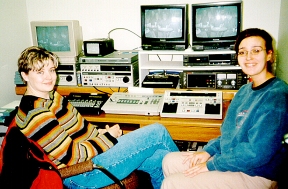
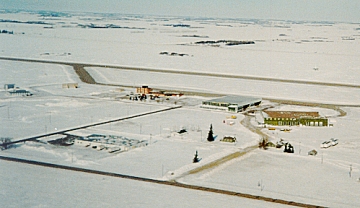
MAILSTROM Hello, my name is Richard Alley from Trowbridge Wiltshire UK. My father Gordon Alley was posted to Canada during the war sometime between 1941-44 as RAF groundcrew. Now deceased I can remember him talking about his time in Canada. Talking about FTS and gunnery school he was based at, 40 below crash guard duties etc etc . He talked about bases near Swiftcurrent, Godridge (gunnery school)? Medicine Hat, and in particular an flying instructor, who's plane a Tiger Moth, with canopy, he was a rigger on. The name of the pilot was MacClaren or McClaren and was either RCAF attached to RAF or the other way round. Up until dad's death he often wondered what became of his pilot! He once said that he ran into an old mate from Canada, Chris Lang, later in the war on Bath Railway station who said that McClaren had been posted back to the UK on bombers and had "bought it" which I presume means that not only was he shot down but also killed! Can you suggest a way of finding out. Cheer!
Just found your WG Campbell Tribute site - my father-in-law also saw service in WWII and was a flight engineer on the Halifaxes in 428 Squadron! Have a tribute site up - it needs updating. He is doing better than the site indicates, although he is still battling cancer.
http://www.geocities.com/halifax44/
Thoroughly enjoyed your site. All the best.Kurc Buzdegan
Platypus Communications Group
http://www.platycom.net
Vancouver BC, Canada
Bill: I found a 1952 membership list for the WPOA in my father's papers. This is the front page, there are 9 pages in total.
"Membership List
Wartime Pilots' and Observers Association
Executive Committee 1951"I thought it might help with your website, or assist someone somewhere.
Best wishes
Brian JohannessonNote: Brian sent us a photocopy of all 9 pages. I haven't had time yet to key them into AS YOU WERE... but please contact Brian or myself if you require the info from the pages.
Notice to aviation buffs!
(Ed. Note: If you missed this keep watching the History Channel as they regularly repeat shows)On History Television on the evening of Wednesday, Feb 21, is scheduled to be a documentary on the 1954 mid-air collision of an RCAF Harvard trainer and a Trans-Canada Airlines North Star. This tragedy cost the life of the Harvard pilot, 34 passengers and crew members on the airliner and a woman in a house on the ground.
The firm that produced this doc, Partners In Motion, has done some excellent aviation history docs, including "Missing On Way Back..." and "Birdman", which deals with the little-known story of Canadian avation pioneer William Wallace Gibson, nicknamed "the Balfgnie Birdman".
THE FINE PRINT AT THE BOTTOM OF THE PAGE:
This message comes from the e-mail site of the Roland Groome Chapter of the Canadian Aviation Historical Society (CAHS) in Regina, Saskatchewan, Canada. Our chapter commemorates the name of pioneer aviator Roland Groome, who held the first commercial pilot's licence in Canada (1920) and owned the first registered aircraft in this country:
Canadian-built JN-4(Can) Canuck G-CAAA.
For more information on the CAHS, surf to: www.cahs.com
THROUGH THE VIEW FINDER British submarines - mainly small craft designed for coastal - operations and without air conditioning -operated in almost all theatres of the war - Atlantic, Mediterranean, Indian Ocean and Far Eastern waters. Around 270 British submarines were eventually deployed. This site features database of all British submarines which operated in WWI, with historical notes and many more features.
Websites of Interest to Our Readers:
Pay them a visit and
check out the photos and stories.
CANADA AT WAR: 1939-1945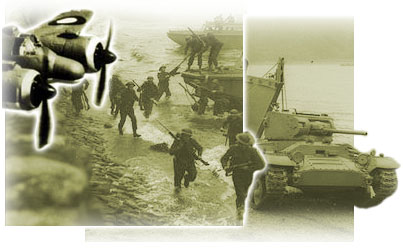
For Valour ~ Death Count ~ Holocaust ~ Munich Agreement ~ Timeline ~ War Time Heroes
Some Interesting Foreign Sites:
FIGHTERS IN WWII PROFILES ~ Russia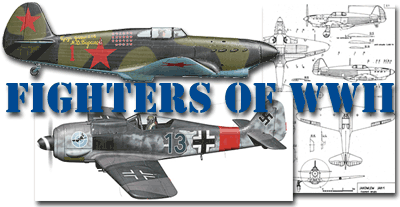
VIRTUAL AIRCRAFT MUSEUM ~ Russia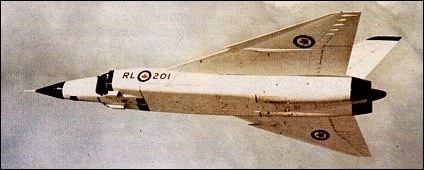
WWII NIGHT FIGHTERS RESOURCE PAGE ~ GERMANY
People | Aircraft | Radar | History | Places | RLM colors | Links | Secret! | Gotha
BRITISH SUBMARINES OF WWII ~ Britain


"Of all the branches of men in the Forces, there is none which shows more devotion and faces grimmer perils than the submarine. Great deeds are done in the air and on the land; nevertheless, nothing surpasses your exploits."
Winston Churchill.
F 18 BREAKING THE SOUND BARRIER ~ USA Through the viewfinder of his camera, Ensign John Gay could see the fighter plane drop from the sky heading toward the port side of the aircraft carrier Constellation. At 1,000 feet, the pilot drops the F/A-18C Hornet to increase his speed to 750 mph, vapor flickering off the curved surfaces of the plane. In the precise moment a cloud in the shape of a farm-fresh egg forms around the Hornet 200 yards from the carrier, its engines rippling the Pacific Ocean just 75 feet below, Gay hears an explosion and snaps his camera shutter once. "I clicked the same time I heard the boom, and I knew I had it", Gay said. What he had was a technically meticulous depiction of the sound barrier being broken July 7, 1999, somewhere on the Pacific between Hawaii and Japan. Sports Illustrated, Brills Content and Life ran the photo. The photo recently took first prize in the science and technology division in the World Press Photo 2000 contest, which drew more than 42,000 entries worldwide. "All of a sudden, in the last few days, I've been getting calls from everywhere about it again. It's kind of neat," he said, in a telephone interview from his station in Virginia Beach, Va. A naval veteran of 12 years, Gay, 38, manages a crew of eight assigned to take intelligence photographs from the high-tech belly of an F-14 Tomcat, the fastest fighter in the U.S. Navy. In July, Gay had been part of a Joint Task Force Exercise as the Constellation made its way to Japan. Gay selected his Nikon 90 S, one of the five 35 mm cameras he owns. He set his 80-300 mm zoom lens on 300 mm, set his shutter speed at 1/1000 of a second with an aperture setting of F5.6. "I put it on full manual, focus and exposure," Gay said. "I tell young photographers who are into automatic everything, you aren't going to get that shot on auto. The plane is too fast. The camera can't keep up." At sea level a plane must exceed 741 mph to break the sound barrier, or the speed at which sound travels. The change in pressure as the plane outruns all of the pressure and sound waves in front of it is heard on the ground as an explosion or sonic boom. The pressure change condenses the water in the air as the jet passes these waves. Altitude, wind speed, humidity, the shape and trajectory of the plane - all of these affect the breaking of this barrier. The slightest drag or atmospheric pull on the plane shatters the vapor oval like fireworks as the plane passes through, he said everything on July 7 was perfect. "You see this vapor flicker around the plane that gets bigger and bigger. You get this loud boom, and it's instantaneous. The vapor cloud is there, and then it's not there. It's the coolest thing you have ever seen."
Shared on Internet Listservers
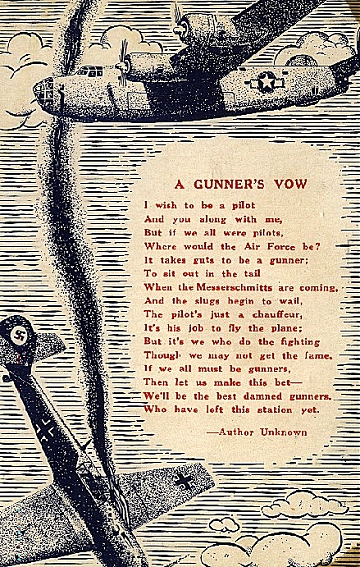 |
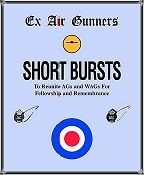
A GUNNER'S VOW I wish to be a pilot
|
|
As You Were . . . Tribute Webzines |
Hillman WWII Tributes www.hillmanweb.com/war |
Ex-Air Gunners Association Magazines |
![]()
![]()
![]()
Webmaster:
William G. Hillman
BILL
& SUE-ON HILLMAN ECLECTIC STUDIO
Editor and Webmaster Bill Hillman
~ Copyright 1996-2021